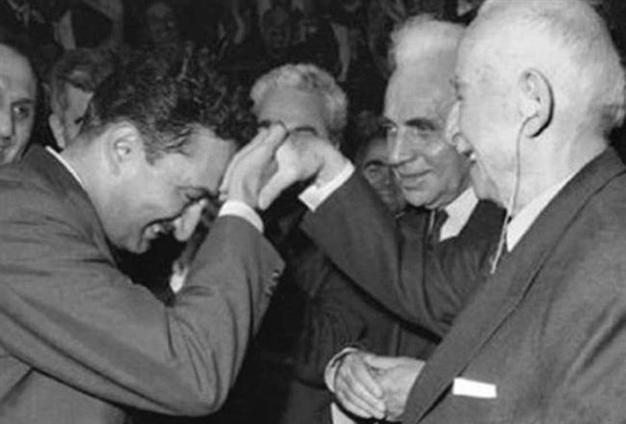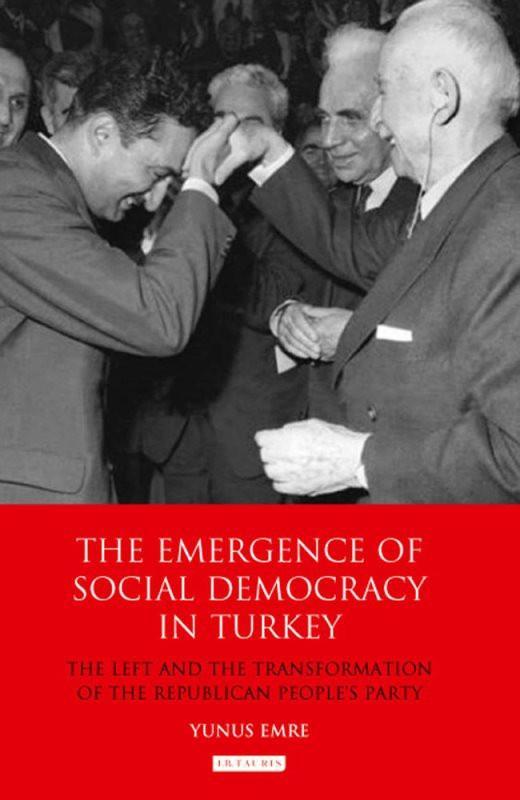The stumbling emergence of social democracy in Turkey
William ARMSTRONG - william.armstrong@hdn.com.tr
 ‘The Emergence of Social Democracy in Turkey: The Left and the Transformation of the Republican People’s Party’ by Yunus Emre (Macmillan, $95, 336 pages)
‘The Emergence of Social Democracy in Turkey: The Left and the Transformation of the Republican People’s Party’ by Yunus Emre (Macmillan, $95, 336 pages)Prime Minister Recep Tayyip Erdoğan is never happier than when he is slamming the main opposition Republican People’s Party (CHP) as solely responsible for all the authoritarian ills of Turkey’s modern history. The point is hammered so effectively and relentlessly that it has become an uncontestable truth for many Turks, but like most tub-thumping political rhetoric from the bully pulpit it’s a gross oversimplification. In fact, the CHP has spent far more time out of power than in it throughout republican history, and the its traditional principles have had a far less tenacious hold on the Turkish state than many want to believe. Indeed, those principles have been robustly contested within the party itself.
 This detailed study by Turkish academic Yunus Emre focuses on the emergence of the CHP’s social democratic wing in the 1950s and 1960s, examining the peculiar trajectory of a center-left outside of social democracy’s “native” Western Europe. To frame this emergence, Emre spends a long time sketching the party’s origins in the early years of the republic, when it was in charge as a single party government for 27 years. In many senses, this early CHP defined itself against the left: The existence of classes and class interests was flatly rejected by the Kemalist nation-builders, who emphasized the principle of a single corporatist nation undifferentiated by class struggle or division and suppressed the organized labor movement. The establishment of a national economy and a national bourgeoisie was prioritized; no class-based organizations were allowed until 1947 and socialism and socialist organizations were illegal until the 1960s (long after the single-party era had ended).
This detailed study by Turkish academic Yunus Emre focuses on the emergence of the CHP’s social democratic wing in the 1950s and 1960s, examining the peculiar trajectory of a center-left outside of social democracy’s “native” Western Europe. To frame this emergence, Emre spends a long time sketching the party’s origins in the early years of the republic, when it was in charge as a single party government for 27 years. In many senses, this early CHP defined itself against the left: The existence of classes and class interests was flatly rejected by the Kemalist nation-builders, who emphasized the principle of a single corporatist nation undifferentiated by class struggle or division and suppressed the organized labor movement. The establishment of a national economy and a national bourgeoisie was prioritized; no class-based organizations were allowed until 1947 and socialism and socialist organizations were illegal until the 1960s (long after the single-party era had ended). This heavy historical heritage was the main obstacle to the social democratization of the CHP, and Emre is keen to stress that the influences that led to the emergence of social democratic tendencies in the party came from outside, rather than from within. One of the biggest pressures came from the Democrat Party government of the 1950s, when electoral competition forced the CHP to search for a message and appeal to the masses. However, it took the military coup of 1960 to bring this reformist shift to the fore. After that intervention, a new constitution was written with heavy cooperation between the military and the CHP, resulting in probably the most “liberal” constitution Turkey has ever had – despite the fact that it also reinforced the military’s heavy-handed role in politics.
When parliamentary elections returned, the CHP went into three unwieldy coalition governments with conservative partners, throughout which its reformist and social democratic urges went into abeyance. Though it’s true that Labor Minister – and future PM – Bülent Ecevit managed to pass a key right to strike law in 1963, the three governments of the CHP in the first half of the 1960s generally enacted policies that were a flat denial of the reformist program. Still, outside pressures from the left kept the social democratic elements of the CHP relevant. Key among these was the emergence of left-wing parties and working class organizations in the early 1960s. The first explicitly socialist party in Turkey to win parliamentary representation was the Workers Party of Turkey (TİP), led by lawyer Mehmet Ali Aybar, which became one of the key actors in defining the country’s emergent left. Addressing the effects of this left on the CHP, Emre writes:
The CHP did not contribute to the development of the left or to the working class movement. However, this newly emerging left directly influenced [its] position. The emergence of a strong socialist movement became the main reason for [its] shift to the left-of-centre. The new political environment after the emergence of the left forced the CHP to redefine itself under the new circumstances.
This influence would manifest itself, to varying degrees, in three key policy areas that are studied in detail in this book: Land reform, planned development, and anti-Americanism. After the last of the three unstable post-coup coalition governments collapsed in 1965, the CHP’s reformist wings came to the fore more confidently and the term “left of center” started to be used explicitly by the party hierarchy.
The traditionalist and reformist wings of the CHP have coexisted uneasily ever since, and the former has been dominant since the party reformed in 1992. Some observers have suggested that the key to success for today’s CHP lies in tilting the political conversation in Turkey away from the cultural arguments that it can’t win and towards economic dividing lines. That’s easier said than done, and ignores not only the AKP government’s ability to dominate the popular narrative, but also the sheer strength of the cultural arguments in the post-1980 context. What’s more, it’s also important to remember Turkey’s peculiar political class dynamics. The CHP may be the nominal (however contestable) party of the mainstream “left” in Turkey, but its base constituency is not made up of the working and lower-middle classes – a direct reversal of the typical western European social democratic model. While leftist parties in Turkey have appealed with some success to those classes in the past, transcending the cultural and class divide as figures like Ecevit once did looks an almost impossible task today.










